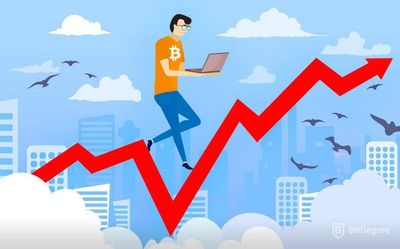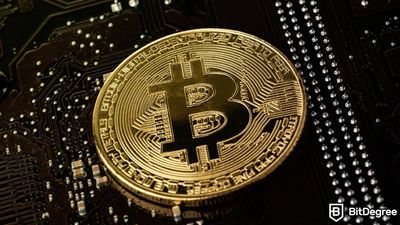Key Takeaways
- Stagflation is when high inflation, stagnant growth, and high unemployment occur simultaneously;
- Stagflation makes traditional assets like stocks and bonds less attractive due to eroding purchasing power, prompting interest in alternative assets like gold and commodities;
- Cryptocurrencies like Bitcoin are seen by some as potential hedges against stagflation due to their decentralized nature, offering a store of value during economic uncertainty.
Stop overpaying - start transferring money with Ogvio. Sign up, invite friends & grab Rewards now! 🎁
Everyone must know the stagflation meaning, the term that dominated economic discussions in the 1970s and is still rearing its head today. As various countries grapple with the fallout from the COVID-19 pandemic and navigate the path to recovery, the specter of stagflation looms large.
Add that to the peculiarities of the crypto market, and you’ll get complex shifts, shaking entire economic ecosystems. Stagflation can cast a shadow of uncertainty over fiat and crypto global markets, and that can impact trading on platforms like Binance, Bybit, or Kraken. Most importantly, it raises significant concerns about the sustainability of certain economic growth patterns.
So, let's simplify all this complexity together and try to understand stagflation meaning, causes, effects, and even how to beat it.

Did you know?
Subscribe - We publish new crypto explainer videos every week!
What is Litecoin? LTC Easily Explained (ANIMATED)
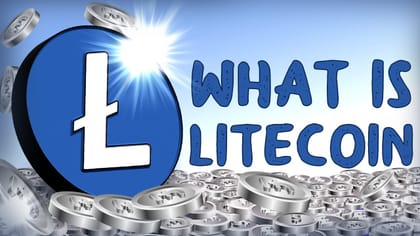

Table of Contents
What is Stagflation Meaning?
First things first, what is stagflation meaning? Stagflation is a compound of factors that mainly involve three simultaneous occurrences: stagnant economic growth, rising inflation, and high unemployment[1].
Latest Deal Active Right Now:With enough strength, it can defy conventional wisdom and undermine the effectiveness of traditional policy tools.
When an economy experiences slow or negative growth alongside rising prices, this difficult and complex economic landscape called stagflation may arise. It brings severe implications for everyone, affecting consumers, businesses, and overall economic activity.
Addressing stagflation requires innovative policy approaches and a careful balance between combating inflation and dealing with unemployment numbers. This balance proves to be quite a challenge, as trying to fix one problem could result in making the other one worse.
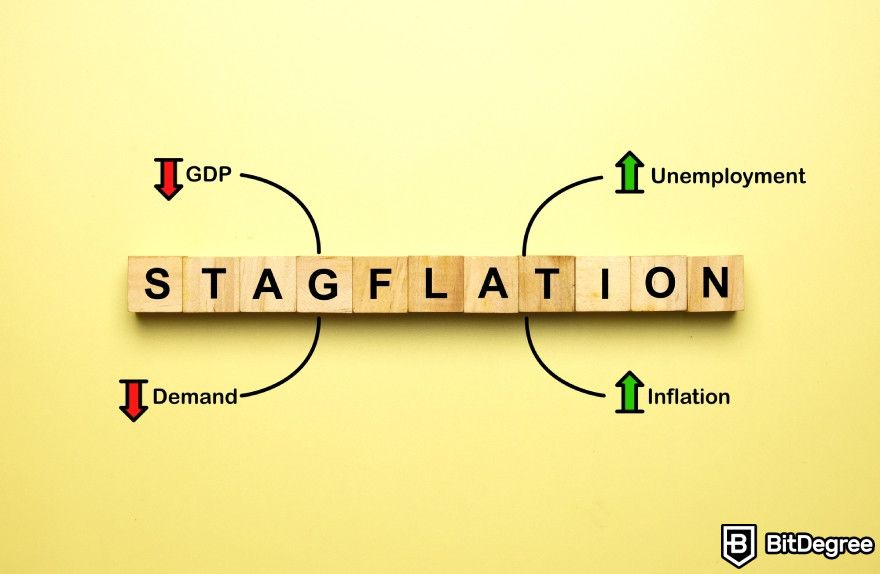
So, you may have your own particular reasons for wondering what is stagflation, and why it is important to understand it.
But don’t forget that collectively understanding stagflation meaning is crucial. Good understanding helps us navigate through intricate and unique economic situations. Only then we can strive for sustainable growth and stability.
That said, let's talk about the most common misconceptions when dealing with stagflation meaning.
Stagflation VS Inflation
As the stagflation meaning can be quite tricky to fully understand, sometimes the concept can be misunderstood.
The first and most common misconception is about stagflation vs inflation. At first, they can be drawn together as concepts, under "economy" as a category. But they don’t mean the same by no means, both have unique characteristics and implications.
Inflation refers to a sustained increase in the general price level of goods and services over time. It describes rising prices and can be caused by factors such as an increase in the money supply or cost-push factors. Mild inflation is considered normal and sometimes beneficial in a growing economy.
Nevertheless, high and volatile inflation can be negative and draw many adverse effects, such as:
- Reduced purchasing power. Inflation erodes the value of a certain currency over time. As prices rise, purchasing power decreases, meaning one can buy fewer goods and services with the same amount of money.
- Uncertainty and reduced investment. High inflation creates uncertainty about the future value of a currency. When people and businesses are uncertain about future prices, they may be less willing to invest in long-term projects, which can lead to a decrease in investment and business activity.
- Income redistribution. Inflation can affect different groups of people unequally. Those with fixed incomes may experience a decline in their real income, relatively. On the other hand, individuals with assets that appreciate alongside inflation, such as real estate or stocks, may benefit from rising prices.
- Distorted price signals. High inflation can distort price signals in the economy. When prices are rising rapidly, it becomes challenging to distinguish between changes in relative prices and changes driven by general inflation. This can lead to misallocation of resources and inefficiencies in the economy.

- Reduced savings and investment. People may be incentivized to spend their money quickly or invest in assets that can retain their value better than cash. A decrease in savings rates may follow, which can be damaging to long-term investment and economic stability.
- Increased borrowing costs. High inflation tends to be accompanied by higher interest rates as central banks try to control it. This means that borrowing becomes more expensive, making it harder for businesses and individuals to access credit. This hinders investment and slows growth.
- International competitiveness. Inflation can affect a country's international competitiveness. If prices rise faster in one country compared to its trading partners, the country's exports may become more expensive, making them less competitive in the global market, and worsening the trade balance.
Now, the economics definition of stagflation does include inflation. You may even say that high inflation is a component of stagflation.
But let’s not forget that the latter is a combination of multiple factors. High and volatile inflation counts, yes, but add to that a landscape of stagnant economic growth and high unemployment, and only then you’ll get stagflation.
The stagflation vs inflation debate represents a unique dilemma because it contradicts the traditional relationship between inflation and unemployment. While inflation can be managed through measures like tightening monetary policy, combating stagflation requires careful consideration.
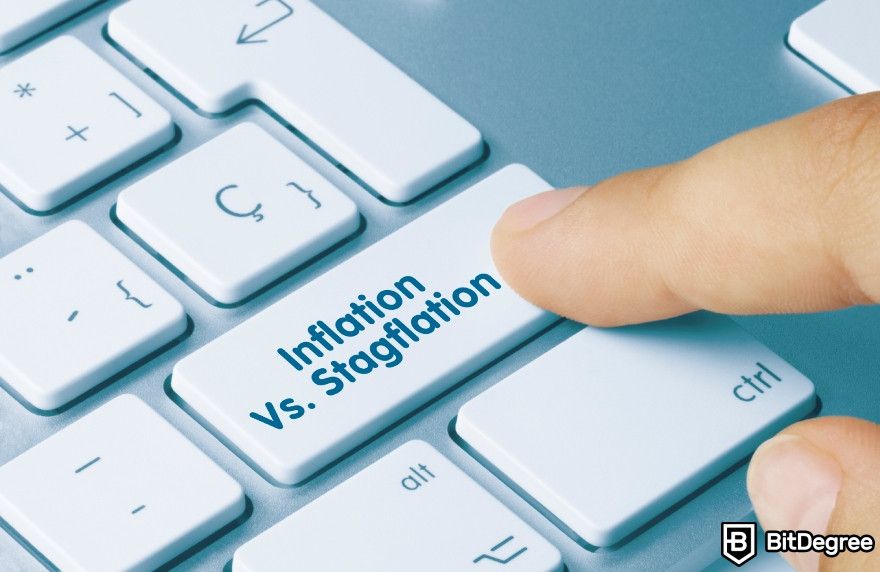
Traditional approaches to controlling inflation can exacerbate problems that are already rampant in stagflation. Those approaches are usually done by reducing government spending or tightening monetary policy. In the case of stagflation, this may add to the already problematic unemployment numbers and worsen economic stagnation.
Therefore, policymakers face a complex task when dealing with stagflation vs inflation. They must navigate the delicate balance between curbing rising prices, promoting economic growth, and avoiding exacerbating unemployment.
Understanding these nuances is essential for formulating effective policies to identify and address stagflation. As traders, being capable to identify and evaluate the specific characteristics of stagflation can also be very helpful. This way, one can consider alternative trading approaches to mitigate its adverse effects.
Stagflation VS Recession
Similar to what was said above, stagflation meaning can be displaced and misinterpreted as being one of its component factors. When trying to understand stagflation vs recession, it's also essential to understand that they represent different economic conditions with distinct characteristics and impacts.
Recession, unlike stagflation and inflation, is a more comprehensible phenomenon. Its definition revolves around a general downturn in economic activity, typically accompanied by a contraction in Gross Domestic Product (GDP) and an upsurge in unemployment rates.
Recessionary periods are relatively common and are considered a normal part of the economic cycle.
In contrast, stagflation is a rare occurrence that demands managing both inflation and economic growth simultaneously.
This unique predicament often calls for unconventional policy measures because conventional methods aimed at tackling inflation or stimulating growth can exacerbate the opposing issue. Policymakers must carefully navigate this delicate balance to mitigate the adverse effects of stagflation.

When addressing a recession, management strategies primarily revolve around implementing fiscal and monetary policies. This is done to stimulate demand and restore confidence in the economy.
Measures like these aim to encourage spending, promote investment, and alleviate unemployment through targeted interventions.
In recent times, the emergence of cryptocurrencies has introduced an additional layer of complexity to the stagflation vs recession scenario.
Cryptocurrencies, with their decentralized nature and disruptive potential, have the capacity to influence traditional economic dynamics. Their increasing prominence highlights the importance of understanding the relations between stagflation meaning and recession, as well as some of the implications of innovative technologies like crypto.
This understanding equips stakeholders with the necessary knowledge to come up with more effective strategies, make informed decisions, and respond promptly to the evolving economic landscape.

To sum up, distinguishing between stagflation and recession is crucial to avoid misconceptions and foster a clear understanding of their distinct characteristics and consequences. While recessions are more common and can be managed through conventional measures, stagflation necessitates navigating the simultaneous challenges of inflation and economic growth.
The rise of cryptocurrencies has added a new dimension to the stagflation vs recession economic scenarios, with their decentralized nature and potential for disruption. As the global economy continues to evolve, it's important to understand all these dynamics if you want to deal with cryptocurrency markets seriously.
The relations between stagflation, inflation, and recession, as well as the impact of emerging technologies like crypto, are becoming more and more crucial for policymakers and investors alike.
Now, to predict what the future may hold, let’s take a step back and see what has already happened.

- Secure and reliable
- Accepts fiat currencies
- Lots of trading options
- Reputable exchange
- Accepts fiat currencies
- Offers various trading options

- Huge trading variety
- Regulation-compliant around the globe
- Fair trading fees
- Beginner-friendly
- A wide array of features
- Vast number of different crypto coins & tokens

- Beginner-friendly
- Secure
- Decent trading and withdrawal fees
- Crypto.com Visa Card
- Automated tools & bots
- Ecosystem synergy with CRO
A Real-Life Example of Stagflation
During the 1970s, the United States experienced a notable instance of stagflation[2], meaning that all the factors that made it occurred at the same time. The OPEC oil embargo, which lasted from 1973 to 1974, caused a significant increase in oil prices worldwide.
Consequently, this sudden surge in energy costs had a profound impact on the US economy. As the price of oil soared, it led to a sharp rise in production costs for businesses, contributing to inflationary pressures. At the same time, the supply shock resulted in reduced economic output and increased unemployment.
The stagflation in the US economy during this period challenged traditional economic theories, which assumed a trade-off between inflation and unemployment.
According to the stagflation definition in economics, this situation posed a dilemma for policymakers. The conventional approach of stimulating the economy through expansionary monetary or fiscal policies could potentially exacerbate inflation without providing a substantial boost to employment.

In response to the stagflation crisis, the US Federal Reserve implemented a series of contractionary monetary policies. These policies aimed to curb inflation by raising interest rates and tightening the money supply.
While these measures initially contributed to a further increase in unemployment, they eventually succeeded in bringing down inflation rates, even if at the expense of short-term economic growth.
The example of stagflation in the 1970s serves as a key historical reference for economists and policymakers. It highlights the complexities and challenges associated with managing an economy in a stagflationary environment.
Additionally, the case underscores the need for a nuanced understanding of economic dynamics and the limitations of traditional economic theories. Furthermore, it emphasizes the importance of adopting unconventional policy measures to tackle more complex economic scenarios.
The economics stagflation definition, as illustrated by a real-life event, is very useful. But it is not very useful if you consider more modern forms of economic activities, like crypto trading. Or is it?
How Does Stagflation Relate to Crypto?
When dealing with stagflation and its meaning, can we apply all the information we find when searching for "stagflation definition economics" to crypto?
Well, one possible link between stagflation and cryptocurrencies lies in the perceived role of crypto as a safe-haven asset.
Cryptocurrencies, particularly Bitcoin, have garnered attention as a potential hedge against the devaluation of traditional currencies. In the context of stagflation, where high inflation and economic instability coexist, individuals may turn to cryptocurrencies to protect their purchasing power.
The limited supply and decentralized nature of cryptocurrencies can further boost their attractiveness. This enhances the argument about crypto being a real option for those seeking stability in harsh scenarios.
In an environment where trust in central banks or government-controlled currencies is eroded, cryptocurrencies offer an alternative that operates independently of traditional financial institutions.
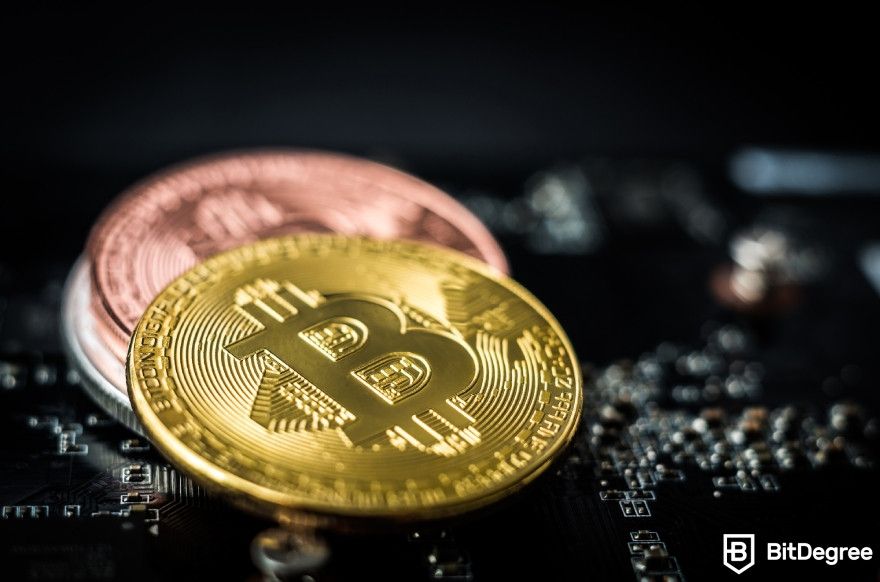
The transparency and immutability provided by some blockchains can instill a sense of reassurance and security, which is just what is missing in uncertain economic landscapes.
However, it is crucial to consider the volatility of cryptocurrencies when discussing their relationship with stagflation. Cryptocurrencies are known for their price fluctuations, which can be both advantageous and disadvantageous during economic turmoil.
On the one hand, increased volatility may present trading and investment opportunities for those who can navigate the market effectively. On the other hand, it amplifies the risks associated with cryptocurrencies, potentially making them less appealing to individuals who are avoiding even the minimal risks.
Additionally, the extent to which cryptocurrencies are adopted and utilized during stagflation depends on their level of acceptance and integration into the broader economy.
While cryptocurrencies have gained traction and popularity in recent years, their widespread adoption as a mainstream means of exchange is still evolving.
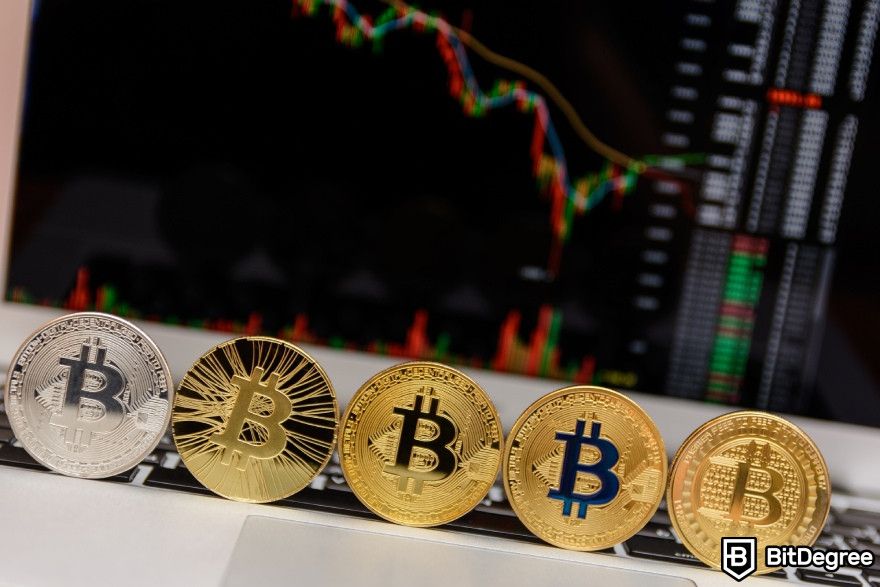
If cryptocurrencies continue to gain acceptance and find increased use in everyday transactions, this may shift quickly. Crypto might serve as a reliable alternative medium of exchange, and that may be a key factor in dealing with those stagflation periods.
To sum up, the relationship between stagflation and cryptocurrencies is multifaceted and deserving of careful examination. Cryptocurrencies can be perceived as a potential safe-haven asset, offering decentralization, trust, and potential stability. Considering the concept and stagflation meaning, this can be proven invaluable.
Nevertheless, crypto’s volatility poses both opportunities and risks, and their adoption during stagflation depends on acceptance and integration into the broader economy.
Considering the various factors at play, policymakers and individuals alike should cautiously evaluate the role of cryptocurrencies in navigating the challenges posed by stagflation.
What Are the Causes and Effects of Stagflation?
Stagflation meaning can be closely tied to its causes. What leads to an economic scenario can shed light on many aspects and even help traders predict and prepare. So, the three key factors that allow stagflation to emerge are supply-side shocks, cost-push inflation, and demand deficiency.
Supply-Side Shocks
Stagflation often arises due to significant disruptions in the supply side of the economy. These supply-side shocks, such as sudden increases in oil prices, natural disasters damaging infrastructure, or trade disruptions, can have profound effects. They result in reduced production capacity, increased production costs, and a decrease in aggregate supply. These shocks are one of the main causes of stagflation.
Cost-Push Inflation
Cost-push inflation occurs when there is a substantial increase in production costs, including labor wages, raw material prices, or energy costs. As businesses pass these costs onto consumers in the form of higher prices, inflationary pressures mount, exacerbating the stagflationary situation. Cost-push inflation is a significant contributor to stagflation.
Demand Deficiency
Stagflation can also be triggered by a deficiency in aggregate demand within the economy. Factors such as reduced consumer spending, decreased investment, or government austerity measures can contribute to lower demand, leading to stagnant growth. Understanding the underlying causes of stagflation's demand deficiency helps to address this aspect of the issue.

By now, you’re already familiar with what is stagflation, but that is not the same as fully comprehending its effects. There are many consequences tied to what causes stagflation, and they may even last longer than the stagflation period itself:
- High unemployment. As you already know, stagflation is often associated with high unemployment rates. As businesses face lower demand, they naturally need to cut back on production and labor.
- Inflationary pressures. High inflation rates follow, which erode the purchasing power of individuals and reduce their standard of living. Rising prices affect consumers' ability to afford essential items and make it harder for the general population to try investing.
- Reduced consumer spending and investment. The inflationary pressures lead to decreased consumer confidence and spending. Additionally, businesses may delay or reduce investment due to uncertain economic conditions, further dampening economic growth.
- Income distribution challenges. Citizens on fixed incomes or with limited resources may struggle to cope with rising prices and increased unemployment. As a result, the burden of inflation and unemployment tends to impact lower-income individuals and vulnerable groups more severely.
- Policy dilemmas. Traditional measures to stimulate economic growth, such as lowering interest rates or increasing government spending, may exacerbate inflationary pressures. Conversely, implementing policies to curb inflation, such as raising interest rates or reducing government spending, could further hinder economic growth and employment.
You may also notice a sort of domino effect to it, in which a factor causes the next one. This can quickly branch out multiple sets of problematic events in a very short period.
Now that you’re more familiar with the causes and effects of stagflation, let’s get practical and figure out how to navigate your crypto investments during stagflation.
Tips on Managing Your Crypto During Stagflation
Here, I’ve been discussing stagflation meaning, how it relates to crypto, as well as what causes stagflation and its effects. With all of this in mind, let’s take crypto assets into account.
Managing your crypto investments during a period of stagflation does require extra careful consideration and strategic planning. Thus, here are some tips on how to beat stagflation and effectively manage your cryptocurrency investments:
Tip 1: Diversify Your Portfolio
Stagflation can pose a challenging time for financial markets, including cryptocurrencies. Therefore, it is essential to diversify your portfolio and consider investing in a range of different cryptocurrencies, spreading your holdings across various sectors and assets.
By doing so, you can mitigate potential losses, and find a dawning market as soon as it rises.
Tip 2: Focus on Stablecoins
Given the high inflation associated with stagflation, it is prudent to allocate a portion of your crypto portfolio to stablecoins. You’ll find that stablecoins are an efficient tool if you’re asking yourself how to beat stagflation.

The ones pegged to fiat currencies, like the US dollar, aim to maintain a stable value. Therefore, they can serve as a valuable tool for preserving your purchasing power during periods of crypto turmoil.
Tip 3: Monitor the Right Indicators
To make well-informed decisions on how to beat stagflation, it is crucial to stay updated with the latest news and trends in both the crypto market and the broader economy.
Many economists advise monitoring indicators such as inflation rates, unemployment rates, and central bank policies. Additionally, keep an eye on regulatory changes or government interventions that may impact cryptocurrencies.
Being aware of the macroeconomic environment can guide you in dealing with stagflation effectively.
Tip 4: Consider Hedging Strategies
As traditional investments like stocks and bonds may underperform during stagflation, exploring alternative strategies becomes essential to beat stagflation.
Hedge against inflation and diversify your risk by considering investments in assets like gold or real estate, which have historically acted as stores of value during inflationary periods[3].

In the crypto market, Bitcoin is often seen as a potential inflation hedge due to its popularity, limited supply, and decentralized nature. As such, it may function similarly to gold or real state investments in the past.
Tip 4: Evaluate Long-Term Prospects
Stagflation is typically a temporary phase, and economies eventually recover. When managing your crypto investments, look beyond the current economic conditions and assess the long-term prospects of the projects you're invested in.
Seek cryptocurrencies with strong fundamentals, active development teams, and real-world use cases. Evaluating their potential for adoption and growth can put you in a great economic position and effectively help you beat stagflation.
Tip 5: Set Realistic Expectations
Given the challenging economic environment and the inherent volatility of cryptocurrency markets, it is crucial to set realistic expectations in your efforts to beat stagflation.
Be prepared for potential fluctuations and losses. Avoid investing more than you can afford to lose and consider consulting with a financial advisor for better chances at beating this challenge.
Overall, effectively managing your crypto investments during stagflation requires a thoughtful approach that takes into account the stagflation meaning and a full understanding of the concept. To answer the question, "How to beat stagflation?" one must assess one's own risk tolerance and financial goals, and then evaluate market conditions and opportunities.
Conclusions
The relationship between stagflation meaning and the current dynamic around fiat currencies and cryptocurrencies is complex, which implies that they rely on multiple factors. Cryptocurrencies have emerged as alternative investment vehicles, offering what gold and real estate offered in previous stagflation events.
Crypto investments are arguably more accessible and democratic. Anyone with an internet connection and access to a renowned exchange like Binance, Bybit, or Kraken can invest in crypto.
At its core, stagflation meaning has always posed challenges for conventional financial systems. In this context, cryptocurrencies offer unique advantages. Decentralized networks may allow for greater control over financial assets, enabling individuals to navigate the outdated restrictions imposed by traditional systems.
On the other hand, the volatility of crypto markets and the evolving regulatory landscape warrant caution. As the interplay between cryptocurrencies and stagflation continues to unfold, it is invaluable to keep yourself informed and up to date with what’s happening in the grand economic scheme of things.
The content published on this website is not aimed to give any kind of financial, investment, trading, or any other form of advice. BitDegree.org does not endorse or suggest you to buy, sell or hold any kind of cryptocurrency. Before making financial investment decisions, do consult your financial advisor.
Scientific References
1. B. Fix: 'The Cause of Stagflation';
2. A. Goutsmedt: 'From the Stagflation to the Great Inflation: Explaining the US economy of the 1970s';
3. S. Arnold, B. R. Auer: 'What Do Scientists Know About Inflation Hedging?'.





